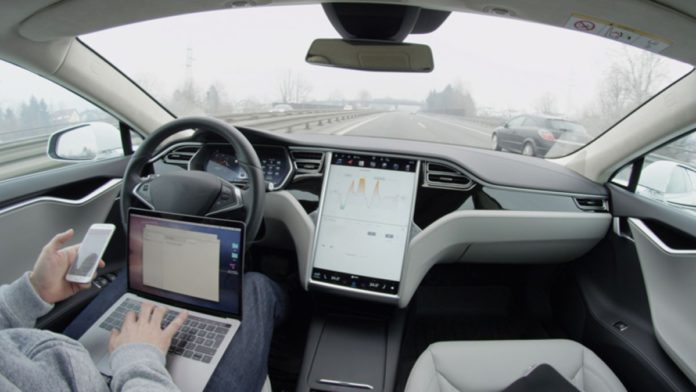“It is vital to be able to explain how a technology works to someone before you attempt to adopt it. Our new paper defines how light interacts with microscale concave interfaces,” says University at Buffalo engineering researcher Qiaoqiang Gan. His research, published online on August 15 in Applied Materials Today, shows that reflective MCIs can aid AVs in recognizing traffic signs.
Gan, Ph.D., is a professor of electrical engineering at the UB School of Engineering and Applied Sciences. He led this collaborative study conducted by a team comprising researchers from UB, Texas Tech University, Fudan University, the University of Shanghai for Science and Technology (USST), and Hubei University. The paper’s first authors are Haifeng Hu, Ph.D., professor of optical-electrical and computer engineering at the USST, and Jacob Rada, UB Ph.D. student in electrical engineering.
The study, titled ‘Multiple concentric rainbows induced by microscale concave interfaces for reflective displays,’ focuses on a thin film of retro-reflective material comprising polymer microspheres laid down on the sticky side of a transparent tape.
Read more: Stanford’s ML Algorithm Accurately Predicts the Structure of Biological Macromolecules
The study reports that shining white light on this film causes the light to create concentric rainbow rings as it reflects. Alternatively, hitting the material with a single-colored laser (green, red, or blue) generates a bright and dark ring pattern. Reflections from infrared lasers on a thin film of retro-reflective material comprising polymer microspheres also produced distinctive signals comprising concentric rings.
The researchers used a thin film in a stop sign for their study and found that the patterns were clearly visible on a visual camera and LIDAR (laser imaging, detection, and ranging). The visual camera detects visible light and a LIDAR camera detects infrared signals. Traffic signs made with this film will ensure that autonomous vehicles can read road signs.
“Currently, autopilot systems face many challenges in recognizing traffic signs, especially in real-world conditions,” Gan says. “Smart traffic signs made from our material could provide more signals for future systems that use LIDAR and visible pattern recognition together to identify important traffic signs. This may be helpful to improve the traffic safety for autonomous cars.”
The researchers demonstrated a new combined strategy to enhance visible pattern recognition and LIDAR signal, tasks that were previously performed by both visible and infrared cameras. The study also depicted that since MCI constantly produces powerful signals, it is ideal for LIDAR cameras.
Researchers have issued a patent in the U.S. along with a counterpart in China for the retro-reflective material, with Fudan University and UB as the patent-holders. The rainbow-making technology is available for licensing.
Gan says plans include testing the film using different wavelengths of light and different materials for the microspheres to enhance performance for possible applications such as traffic signs designed for future self-driving cars.


